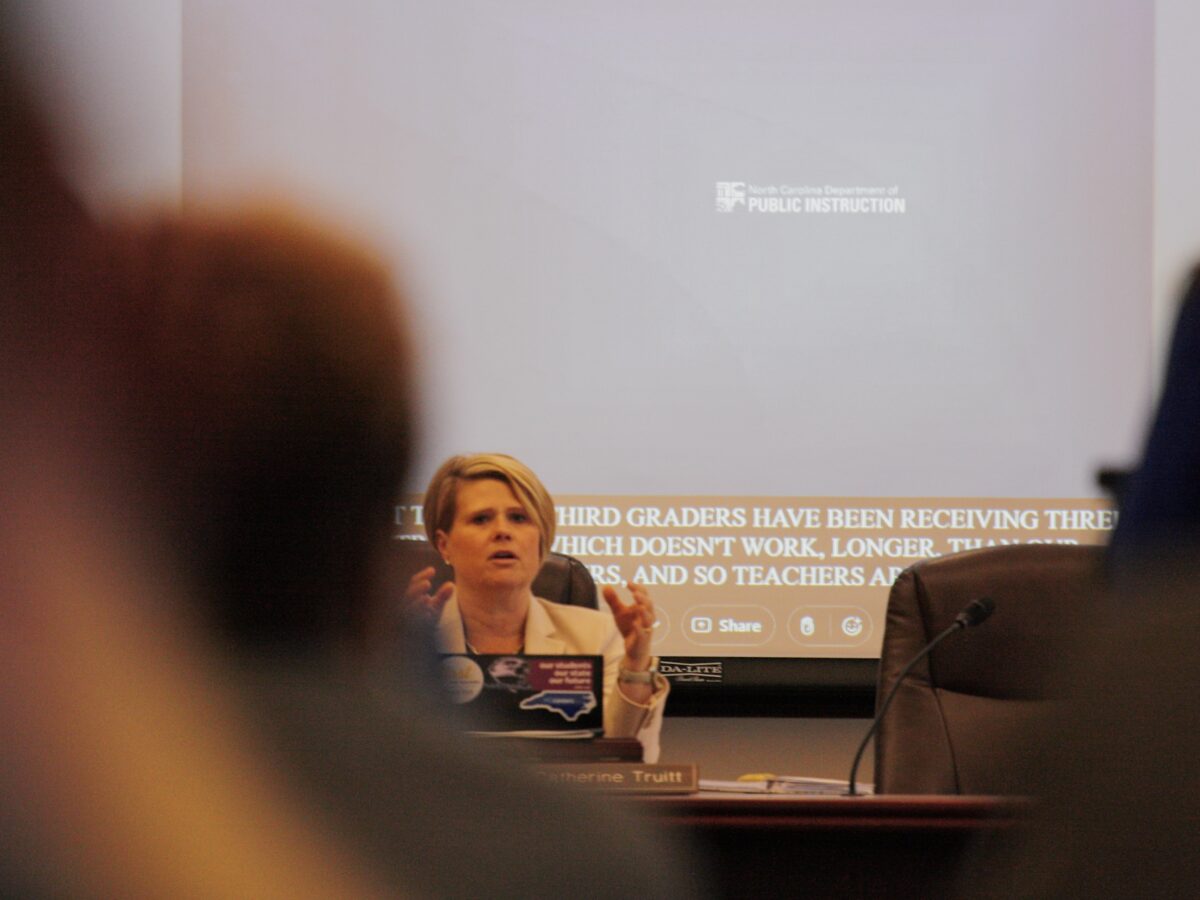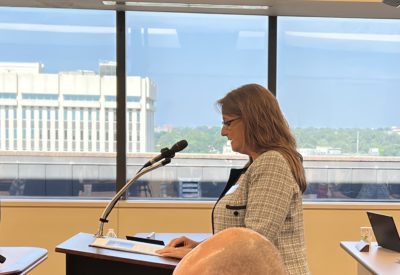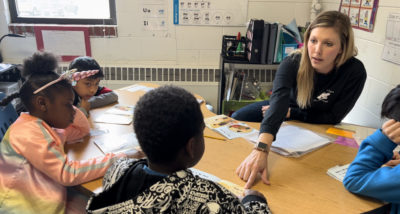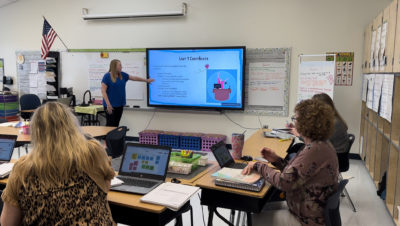
|
|
More K-3 students are on track when it comes to gaining literacy skills, according to new data from the Department of Public Instruction (DPI) during the first full year of implementation of the Excellent Public Schools Act of 2021.
On Wednesday, DPI’s Office of Early Learning Director Amy Rhyne presented middle of the year data on the 2022-23 Read to Achieve program to the State Board of Education. North Carolina K-3 students showed growth in literacy skills from the beginning to the middle of this academic year, the data show – at faster rates than the national sample.
“I’m proud of our educators and what’s happening… no matter which way we look at it, they are making strides,” Rhyne said at Wednesday’s State Board of Education meeting. “We would love for those proficiencies to be higher, but we are just beginning and we have great things ahead.”
The percentage of K-3 students needing intensive intervention also decreased at faster rates, with the exception of third grade. That grade increased by three percentage points in both North Carolina and in the national sample.
Under both measures, kindergarten students showed significant gains – growing by 26 percentage points from the start of the year, and the number of students needing intervention decreasing by 26 percentage points.
DPI’s presentation also shows that white, Asian, Black, Hispanic, and American Indian/Alaska Native students each saw growth from the start of the year, with white and Asian students showing the largest readiness rates. Likewise, each student group saw a decrease in the percentage of students needing intensive intervention.
“The mid-year gains made by all student groups in North Carolina were greater than students given the same assessment in other states,” a DPI release said.
You can view the full Read to Achieve presentation here.
In 2021, lawmakers updated the Excellent Public Schools Act to emphasize the use of the science of reading to ensure students in elementary schools can read on grade level by grade three.
The “science of reading” refers to a body of research conducted by reading experts, especially cognitive scientists, on how we learn to read and how we read to learn. According to DPI, it is “evidence-based reading instruction practices that address the acquisition of language, phonological and phonemic awareness, phonics and spelling, fluency, vocabulary, oral language, and comprehension that can be differentiated to meet the needs of individual students.”
The 2022-23 school year is the first year implementation of science in reading in classrooms began, according to DPI. Deputy State Superintendent Michael Maher previously said it is likely that the state will fully know results from these efforts when students now in kindergarten reach third grade.
In the meantime, the beginning of year (BOY) and middle of year (MOY) assessments can help individual schools – and the state as a whole – make sure they’re staying on track.
Highlighting growth and identifying intervention
Because students start each year with different expectations for where their reading skills should start, comparing the data from one school year to the next is not as informative as comparing students’ growth within the same year, Rhyne previously told EdNC.
The presentation also showed increases from the 2021-22 to the 2022-23 MOY reports, following further implementation of the science of reading across the state. The data compares North Carolina’s results with 1.6 million K-3 students elsewhere in the nation taking the same assessment, according to Amplify.
“One of the things that we talked about at the beginning of the year with the data is that we were catching up,” Rhyne said on Wednesday. “Now we have surpassed, and so that’s also a great celebration for North Carolina.”

The state requires every teacher to administer the assessment using Amplify’s mCLASS tool at least three times a year — once at the beginning, once in the middle, and once at the end of the year. Some schools choose to administer the assessment more often than that.
While schools report end-of-grade testing each year, which receives widespread attention, many educators watch these middle of the year assessments more closely because they provide insight into where students are growing — or not growing. The assessments are also broken down across several categories of reading sub-skills. Then, schools and teachers can use that data to inform individualized instruction or intervention plans.
End-of-grade tests, on the other hand, provide an isolated view of how students perform on curriculum by the end of the year. As Rhyne told EdNC last year, assessments show where students are in the process of learning to read, while end-of-grade testing shows whether students are ready to read to learn.
On Wednesday, Truitt said this “amazing data” gives her reason to think third graders might do better on those end-of-grade tests this year. However, she emphasized the need to continue addressing any impacts of remote learning on those students.
“Given the growth that we’re seeing, we are anticipating that our third graders are going to do better than they have in the past,” she said. “But we still have to contend with the fact that these third graders missed almost a year and a half of school when they were just entering school.”
Science of reading
After the passage of the the Excellent Public Schools Act of 2021, the state has used the version of mCLASS with the Amplify DIBELS 8 Formative Reading Diagnostic Assessment — an updated tool that Amplify officials said aligns better with the science of reading. As of last year, about 35 states used Amplify’ assessments.
According to Amplify spokesperson Kay Moffett, mCLASS assessments provide teachers with data they can use to target instruction based on what reading skills students have or need to learn more fully. It measures things like fluency with letters and phonemes (the sound segments that make up a word), and word reading fluency and vocabulary.
Last fall, DPI data showed that though there were gains in literacy since the heart of the pandemic, students remain behind where they were pre-pandemic. Wednesday’s presentation did not include specific comparisons to before the pandemic.
Slide from October 2022 committee meeting. 2019-20 numbers are missing because end-of-grade tests were canceled due to the pandemic.
Slide from October 2022 committee meeting. 2019-20 numbers are missing because end-of-grade tests were canceled due to the pandemic.
In August, DPI received assessment data to help it set a baseline for measuring effective literacy instruction. That data showed that North Carolina’s young learners grew significantly in foundational literacy skills between the start and end of the 2021-22 school year.
“We still have a long way to go, but the results we’re seeing from last year are clearly pointing in the right direction,” Truitt said in an Aug. 25 release.
On Wednesday, she praised local districts and teachers working to implement the science of reading.
“On top of all the other hard work that teachers do in their classrooms every day, they’ve been spending many hours outside the classroom learning to retool their instructional practices,” Truitt said in a DPI release. “They’re to be commended, as their work has helped improve literacy proficiency and outcomes for students across the state.”
Though such gains took place after the law implementing the science of reading, Rhyne previously cautioned against overemphasizing the timing.
Language Essentials for Teachers of Reading and Spelling (LETRS) – the training being provided to teachers across the state – did not start until the end of the last school year. The third cohort of districts started training last fall.
Seven districts have completed LETRS training, according to DPI: Catawba, Clay, McDowell, Newton-Conover, Polk, Scotland, and Vance. On Wednesday, Truitt mentioned the possibility of providing LETRS training to interested middle school teachers.
“All districts continue to be ahead of schedule,” the DPI presentation said.
Many school leaders also say they’re seeing a difference in how teachers use and respond to this assessment data.
At Endy Elementary in Stanly County Schools, for example, teachers are looking for growth to celebrate — but also for where they’re not seeing growth, and what they can do about it.
“They’re coming to us knowing that,” Principal Jodi Autry said of her teachers. “That rate of improvement is really important. In mCLASS, where it says that you made (growth in) this but didn’t make this – that lets us pinpoint and target what (students) need.”
Behind the Story
EdNC reporter Rupen Fofaria contributed to the reporting in this story. In addition, portions of the context in this article were originally reported by Rupen Fofaria and Alex Granados in their articles, “Elementary students made growth last year in skills that lead to reading proficiency, new data show,” and “When will nearly all N.C. elementary students be able to read on grade level?” respectively.





